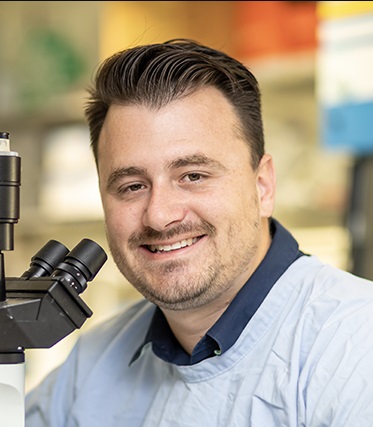Research And Grants

Hunter Medical Research Institute – $200,000
Dr. Ryan Duchatel
$200,000.00
November 2022
Translational
DIPG / DMG
DMG COMBATT 2.0: Diffuse Midline Glioma COMbined Anti-Tumor Targeting 2.0
This proposal is a continuation of our project ‘COMBATT DMG’ supported by the DMG Collaborative in 2020. In COMBATT DMG we developed a catalog of new, central nervous system (CNS)-active drugs targeting ‘Protein kinase C’ (PKC). PKC is a signaling gene that drives the disseminative growth of DMG tumors, seeing them extend from their original, midline location, outward through healthy, previously functional, brain tissue. Our laboratory has discovered that PKC signaling is upregulated in tumor cells when an alternate cancer growth pathway (known as ‘PI3K’), is inhibited using the drug ‘paxalisib’. With paxalisib already in clinical trial for pediatric, adolescent, and young adult patients with diffuse midline glioma (DMG), plus adults with other high-grade gliomas (HGG), COMBATT DMG TWO will study the new, blood-brain-penetrant, potent PKC inhibitors in combination with paxalisib. Given our unique PKC analogs target the mechanism that rescues growth following DMG treatment with paxalisib (i.e., therapy resistance), we anticipate combined use of our novel PKC inhibitor/s with paxalisib will deliver improved outcomes by way of increasing the number of responders and enhancing the durability/duration of therapeutic benefit. In addition to the proposed clinical benefit, development of these unique drug molecules has added commercial potential.
DMG, including those of the pons (diffuse intrinsic pontine glioma - DIPG), are tumors of the central nervous system (CNS), and are primarily diagnosed in children and young adults. Although recognized as the most lethal of all childhood cancers, palliative radiotherapy remains the only proven treatment option, however, response is short-lived and not guaranteed.
A major contributor to the particularly poor outcomes experienced by DIPG/DMG patients is the location and nature of tumor growth. Positioned amid structures controlling the patient’s life-sustaining functions (e.g. breathing, swallowing, senses and movement), and intertwined with healthy brain matter, surgical resection is rarely an option. As such, access to tumor tissue for diagnosis and/or study purposes is limited. Additionally, the blood-brain barrier (BBB) is a highly-selective protective layer which regulates the flow of substances in and out of the brain. Just as it blocks toxins or bacteria, an anti-tumor drug/therapy showing good effect in laboratory-based studies will have no effect in a living patient if it is excluded by the BBB. Further, a lack of DMG-specific therapies/strategies potent enough to kill tumor cells without causing systemic toxicity is another hurdle the field is yet to overcome.
In recognition of these barriers to improved patient outcomes, this project attempts to address the unique biology underpinning DMG growth and therapies targeting these that show selective DMG efficacy and potential to penetrate the BBB to have a benefit for patients. Focusing on therapies already showing preliminary benefit in DMG clinical trials (paxalisib), we have identified strategies to amplify the DMG cell death induced by paxalisib, without causing harm to the body’s healthy brain cells.
Our in vitro studies underpinning this proposal confirm paxalisib reduces proliferation of DMG cells, but also potentiates the diffuse growth characteristics of DMGs through the activation of PKC in cells that are less sensitive to paxalisib. Using the aggressive DMG animal model ‘SU-DIPG-XIIIP*’, we show that the combination of paxalisib and PKC inhibitor enzastaurin (FDA approved for use in glioblastoma) extended the survival DMG mice by 22% (p<0.001). Notably, just 15-17% of the total dose of the PKC inhibitor enzastaurin showed BBB penetration, whereas >50% of paxalisib crossed the BBB. Additional medicinal chemistry modeling suggested enzastaurin and other existing PKC inhibitors were poor candidates for BBB penetration, and so, we have since designed and synthesized analogs of the PKC inhibitor showing greatest potential.
Our PKC inhibitor analogs are designed to be more effective at crossing the BBB and more potent in their ability to deactivate PKC. In this project we will scale up production of the two most promising analogs, and determine their activity in animal models, determine their safety and toxicity profiles, and determine the maximum tolerated dose that can be used without causing harm. Similarly, we will investigate toxicity and safety when used in combination with paxalisib. These studies will then progress to testing the most promising combination and dosing in DMG animal models to determine their preclinical benefit.
This program of work will be executed by a team of experts with recognized skills in drug development, DMG biology and commercialization. It is hoped that at the completion of this project that we will file for intellectual property protection for the most promising new PKC analog, and partner with our industry collaborators to develop the drug for testing under clinical trials. We hope that the successful completion of this project will lead to a combination treatment strategy designed on the unique biology of DMG that may help to reduce the infiltrative growth of the cancer and even lead to better outcomes when coupled with standard of care radiotherapy treatments.

